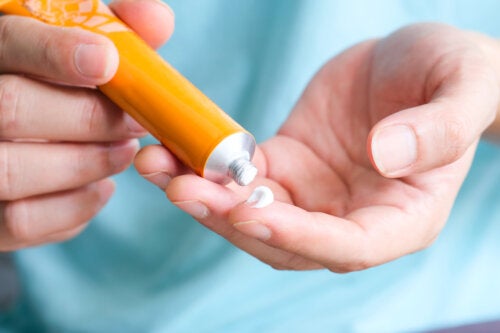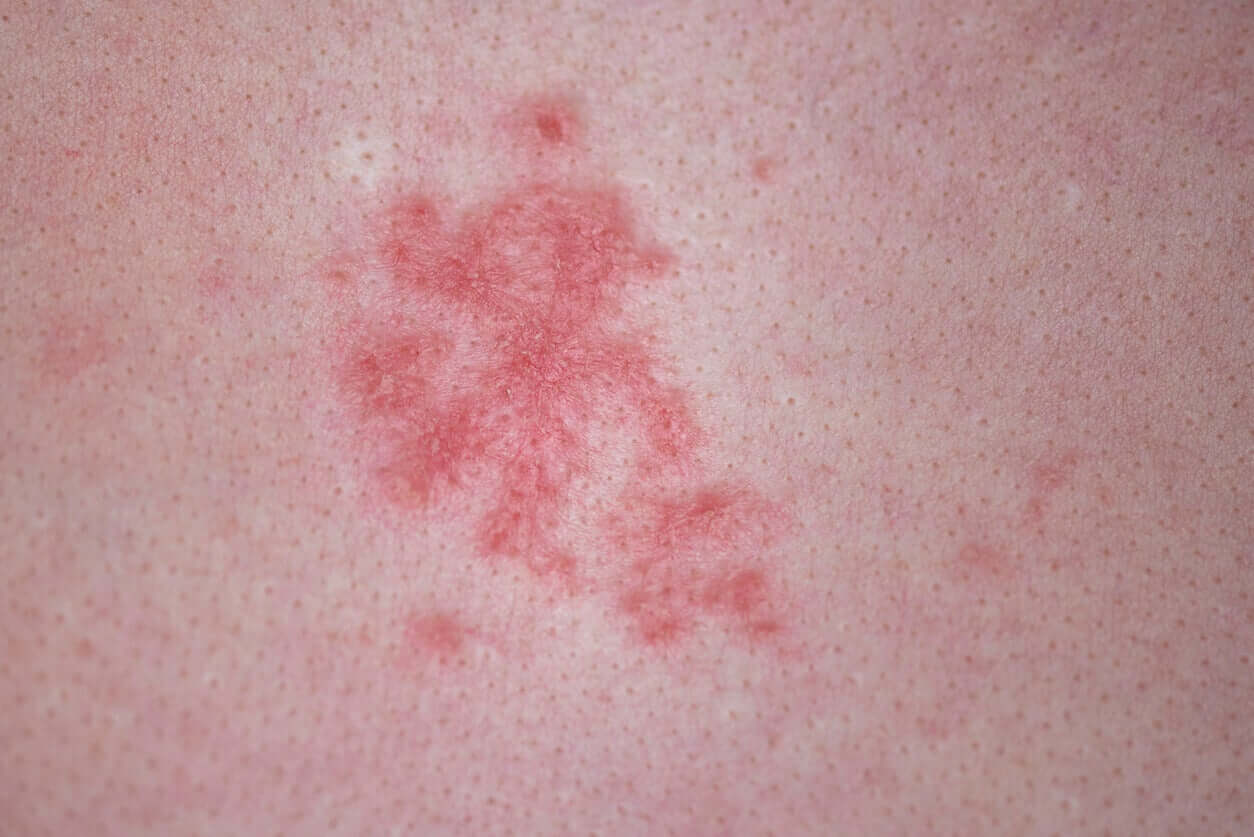Breastfeeding and Steroid Creams: What You Should Know
The mother's breasts are very prone to injury during lactation and on more than one occasion, require certain pharmacological treatments. With that in mind, we want to talk about breastfeeding and steroid creams.

Mother’s milk is a living fluid that provides many nutrients and beneficial elements to the baby. However, breastfeeding can also be the entry point for some potentially toxic substances for little ones. For this reason, at this stage, mothers should carry out only those treatments that have been proven to be safe. We’ll tell you all about the use of steroid creams during breastfeeding in the following article.
What are steroid creams for?
Steroids or corticosteroids are very common medicines due to their great anti-inflammatory power. So much so, that they’re a very effective strategy for the local (or topical) treatment of certain skin diseases.
There are many creams that contain this drug among its components, but not all are the same or serve the same purposes.
One of the main differences between the creams is the power of the steroid’s effect, also known as potency. The type of corticosteroid molecule and also the substances that carry it within the product are what determine this quality.
Therefore, betamethasone isn’t the same as hydrocortisone (both steroids), just as using a lotion isn’t the same as using a cream.
In clinical dermatology, the use of topical steroids is widespread and studied. Thanks to the affinity of these drugs for fats, the layers of the skin easily absorb them, and this produces a therapeutic effect in a short time.
Another of their advantages is that they’re degraded quickly and this prevents them from passing into the blood and generating systemic effects (throughout the body).

Breastfeeding and steroid creams
As we mentioned before, the use of topical steroids is a great ally of treatments for skin conditions. But as we suggest with any medication, you need to verify its safety before using it during pregnancy and lactation.
In general, corticosteroid creams are safe for breastfeeding, as the risk of harm to the baby is quite low.
On the one hand, as already explained, the absorption in the skin is good and its passage into the blood is scarce. This helps prevent breast milk from being contaminated with this substance.
On the other hand, in the case of a remnant of steroid cream remaining on the skin of the breast that the baby can ingest by accident, the possibility of it being absorbed in the child’s stomach is negligible.
So, if the treatment is done properly, the mother benefits without harming her little one.
Recommendations for the proper use of steroid creams during lactation
To reduce the risks of toxicity in the baby, it is important to take into account some precautions when using these products:
- Select low-potency corticosteroids.
- Opt for cream formulations.
- Always apply to the injured area and not to the entire breast.
- Avoid applying to the areola and nipple, whenever possible.
- Use on dry skin, once breastfeeding is finished.
- Before reattaching the baby to the breast, clean the area properly.
- Don’t use for more than 5 days.
Steroid creams on the nipple
It’s quite common in the initial stages of lactation for there to be injuries in the area near the nipple, such as dryness or irritation.
When non-pharmacological measures aren’t enough, it’s important for the doctor to evaluate the advisability of proceeding with some topical pharmacological treatment. In this regard, steroid creams can be a good option.
Natural alternatives for skin problems associated with breastfeeding
While steroids are safe medications, they’re not the only possible alternative while breastfeeding.
As a general guideline, it’s best to implement certain skincare routines in order to prevent dryness in sensitive areas. Some of the breast moistening strategies are as follows:
- Use moisturizing body creams, without perfumes, alcohols, or parabens.
- Apply a few drops of olive oil on the nipples and areolas.
- Moisten the nipple area with your own breast milk, after each feeding.
- Air out the breasts between feedings.
You may be interested: 6 Ways to Care for Your Breasts During Lactation
When it comes to treating cracks in the nipple or trauma caused by the baby’s mouth, there are also natural alternatives. For example, lanolin-based products, dexpanthenol (provitamin B5), and the enzyme collagenase have been shown to be very effective.

About medical treatments while breastfeeding
Before starting any treatment in this period of your life, you should consult your doctor or your lactation consultant. Even if you only need a skin cream, you should seek the endorsement of professionals so as not to put your baby’s health at risk.
Likewise, find out what precautionary measures you should take in case of illness and avoid interrupting breastfeeding.
Currently, most drug treatments are compatible with breastfeeding and there’s a way to corroborate the potential risk of each drug. Keep in mind that many natural alternatives are also potentially harmful to little ones, so you should seek the guidance of specialists.

